This article was co-authored by Steve Horney PT, MPT, MTC, CSCS. Steve Horney is a Licensed Physical Therapist and the Owner of Integrated Health Sciences, a New York City-based company that provides continuing education, health care products, and manual and movement physical therapy. Steve has over 15 years of academic and professional physical therapy training and specializes in the assessment and treatment of athletes with the goal of helping them become pain-free and less susceptible to injury. Steve is also a certified strength and conditioning specialist (CSCS) from the National Strength and Conditioning Association (NSCA). He received a BS in Health Science from Quinnipiac University in 2004 and a Masters of Physical Therapy (MPT) from Quinnipiac University in 2006. He then completed his Manual Therapy Certification (MTC) from the University of St. Augustine in 2014.
There are 9 references cited in this article, which can be found at the bottom of the page.
wikiHow marks an article as reader-approved once it receives enough positive feedback. In this case, 87% of readers who voted found the article helpful, earning it our reader-approved status.
This article has been viewed 77,452 times.
Back spasms, which may feel like cramping, affect many people worldwide. These sudden and involuntary contractions of your back muscles can disrupt your sleep as well as your daily activities, including work. If you wake up with back spasms, there are many different ways to get rid of them. Lifestyle remedies and medication, for example, may help you not only relieve the pain but also get on with your day.
Steps
Treating Back Spasms with Lifestyle Remedies
-
1Wake up slowly. If a back spasm wakes you up, give yourself a few minutes to wake up and get out of bed. A back spasm can be jarring, painful, and may even make you slightly dizzy, so allowing yourself to take it slowly may help relieve your symptoms. If you find it difficult to get up, follow this procedure:
- Lie on your back and keep your knees bent.
- Rotate your body to the side, so that you are lying on your side with your knees still slightly bent.
- Slowly bring your legs off the bed and push yourself up with your bottom arm, making sure your body moves in one fluid motion.
- Place your feet on the ground and use your hands to push off the bed. Make sure that you go slowly.
-
2Stretch your hips and middle back when you get out of bed. If you have a spasm or cramping in your back, it can often be caused by tightness in the hips or middle back. If you want to get to the root of the problem, some gentle stretching to those areas may help.[1]
- Don't strain against the tension of spasm. Instead, stretch as you are able. Only increase the stretch as the cramping releases.
- You might want to walk around in between stretching to help relax your back.
- You can lightly massage your back as you stretch, too.
Advertisement -
3Do some gentle exercise or activity. Gentle exercising can help stretch out your back. General movement will naturally stretch the muscles and also help relax you, but you can also consider other exercises, depending on the severity of your injury.[2] [3]
- Only exercise or undertake activities if you are able to and don’t push yourself. This may only be possible after some light stretching.
- Walking is a low-impact exercise that may help stretch out your back. Take long strides to make sure that you’re using the entire muscle. Depending on what time of morning your spasms strike, either walk around your house or you could walk around the block.
-
4Massage your back. Massage is one of the most effective ways to get rid of a spasm because it increases circulation to the tissues of the muscle. Combined with stretching, massage can quickly alleviate the pain of a back spasm while simultaneously relaxing you.[4]
- Massage your back where the muscle is cramping. Press the area gently with your hands and apply more pressure if it doesn’t hurt.
- Consider using a tennis ball to help relieve your pain. You can place the ball between your back and a wall or your chair and gently move back and forth to give yourself a massage.
- A foam roller is another effective way to massage your back. These circular pieces of foam allow you to roll out the affected muscle by applying pressure. If you use a foam roller on your low back, make sure that you use it on one side of your low back at a time. Lying directly on a foam roller can hyperextend your joints.
-
5Use heat to release the spasm and alleviate pain. Using heat on a back spasm can be an extremely effective way to not only relax the muscle contraction and you, but also to relieve the pain. From heating pads to warm baths, there are many different heat treatments to help get rid of back spasms.[5]
- Taking a warm shower or bath will relax you and help relieve the pain of a muscle cramp. The heat from the water can also help promote blood flow to the submerged area. A shower will also work if you don’t have a bathtub.
- You can also try gently stretching out your lower back while you are in the shower. With the shower head pointed at your back, gently move in ways that feel good. However, be careful not to overdo the stretch, or you could end up more sore afterward.[6]
- Using Epsom salts in a warm bath may also help relieve cramping.
- Fill hot water bottle or get a heating pad and place it on the area of your back that is spasming.
- Over the counter heat rubs may also help relieve back spasms and relax the affected area.
-
6Apply a cool or cold compress. Place something cold or cool on your back. This can help relieve pain.[7]
- Use an ice pack as often as necessary for 20 minutes at a time.
- Wrap a bag of frozen vegetables in a dishtowel. The frozen vegetables conform to the shape of the back and may be more comfortable than an ice pack.
- If it is too cold or your skin gets numb, remove the pack. Use a towel between the ice pack and your skin to help prevent frostbite.
-
7Breathe deeply. Deep breathing exercises, sometimes called pranayama, can naturally help dissolve the tension and tightness in your back that is causing the spasms.[8] Do a few deep breathing exercises to help relieve the spasm and your pain.
- Deep breathing can help your body distribute oxygen to your body, which can help ease cramps and back pain. Inhale and exhale completely and in a balanced manner through your nose. For example, you would inhale for 4 breaths, hold for 2 counts, and then exhale completely for four breaths. You can vary the counts according to your abilities.
- You want to get the most out of your deep breathing, so sit upright, with your shoulders back, and refrain from slouching. Breath slowly and evenly by focusing from your stomach, pulling in your belly to expand you lungs and rib cage.
-
8Rest your back. For most back spasms, the best initial treatment is rest. Too much movement may exacerbate the cramping. Give yourself some time to rest to help relieve and prevent back spasms.[9]
- Keep in mind that “rest” is not equivalent to being totally bedridden. You can go to the bathroom, take a shower, and sit briefly on a chair. Simply aim to spend most of your time in a comfortable position – which will vary depending on the site of your injury. Try to get out of the rest position once every hour for at least for a minute or two or for as long as you can.
-
9Sleep in certain positions and don’t use constrictive bedding. Sleeping in some positions and having a tightly made bed can exacerbate the tendency for muscle spasms. By loosening your covers and sleeping on your back or side, you may avoid back spasms in the morning.[10]
- Using a flat sheet on your bed can constrict your movement, so consider sleeping without one.
- Sleeping on your side with your knees bent is the best position to help avoid getting thigh cramps.
- If you sleep on your back, place pillows under your knees to help keep the normal curve of your spine.
- It’s advisable to not sleep on your stomach because it can be hard on your back and neck. If you are unable to sleep in any other position, you can reduce the strain by putting a pillow under your pelvis and lower abdomen. Not sleeping with a pillow under your head may also help reduce strain.
Using Medical Treatments
-
1Take a pain reliever. If other methods don’t help your back spasm or you have lingering pain, take an over the counter medication to help alleviate the pain. If the pain continues for a longer period of time, though, consult your doctor or physical therapist.[11]
- Take ibuprofen, acetaminophen, aspirin, or naproxen sodium to help with the minimize the pain.
- Be aware that taking pain relievers on an empty stomach in the morning may upset your stomach or make you nauseous.
-
2Ingest a muscle relaxant. If your cramping is severe, consider taking a muscle relaxant.[12] This can not only relax the cramping muscle, but may also alleviate any pain associated with it.
- You will need a prescription from your doctor for a muscle relaxant.
- Be aware that muscle relaxants can make you sleepy and drowsy and may make it difficult to function. Taking them on an empty stomach may also make you nauseous or vomit.
-
3Stay away from quinine. Some sources suggest taking quinine for muscle cramps, but this treatment is dangerous and can cause a host of health problems including cardiac arrhythmia, nausea, headaches, and tinnitus.[13]
-
4Call your doctor or physical therapist. If you back spasms are particularly severe, see your doctor or a qualified physical therapist. They may be able to help you determine the cause of your pain, and a physical therapist may be able to recommend exercises and movements to help alleviate your muscle spasms.[14]
- Keep in mind that you can usually make an appointment with a physical therapist without seeing your primary care physician first. In fact, your doctor may refer you to a physical therapist.
- If the pain is very severe and your doctor isn’t yet in the office, either call 911 or go to the emergency room.
Expert Q&A
-
QuestionWhat is the fastest way to relieve back spasms?
 Steve Horney PT, MPT, MTC, CSCSSteve Horney is a Licensed Physical Therapist and the Owner of Integrated Health Sciences, a New York City-based company that provides continuing education, health care products, and manual and movement physical therapy. Steve has over 15 years of academic and professional physical therapy training and specializes in the assessment and treatment of athletes with the goal of helping them become pain-free and less susceptible to injury. Steve is also a certified strength and conditioning specialist (CSCS) from the National Strength and Conditioning Association (NSCA). He received a BS in Health Science from Quinnipiac University in 2004 and a Masters of Physical Therapy (MPT) from Quinnipiac University in 2006. He then completed his Manual Therapy Certification (MTC) from the University of St. Augustine in 2014.
Steve Horney PT, MPT, MTC, CSCSSteve Horney is a Licensed Physical Therapist and the Owner of Integrated Health Sciences, a New York City-based company that provides continuing education, health care products, and manual and movement physical therapy. Steve has over 15 years of academic and professional physical therapy training and specializes in the assessment and treatment of athletes with the goal of helping them become pain-free and less susceptible to injury. Steve is also a certified strength and conditioning specialist (CSCS) from the National Strength and Conditioning Association (NSCA). He received a BS in Health Science from Quinnipiac University in 2004 and a Masters of Physical Therapy (MPT) from Quinnipiac University in 2006. He then completed his Manual Therapy Certification (MTC) from the University of St. Augustine in 2014.
Licensed Physical Therapist You can try wall angel stretches. Stand with your back against a wall. Bend your arms at a 90° angle and hold them against the wall. Slowly raise your arms above your head until you can't hold them against the wall anymore, then bring them back down. Repeat 10 times. If your back is only a little sore, try doing gentle yoga, which will also help stretch out the muscle. Restorative and yin yoga are specifically practiced to help stretch out and repair muscles. However, avoid doing yoga if you're experiencing severe pain.
You can try wall angel stretches. Stand with your back against a wall. Bend your arms at a 90° angle and hold them against the wall. Slowly raise your arms above your head until you can't hold them against the wall anymore, then bring them back down. Repeat 10 times. If your back is only a little sore, try doing gentle yoga, which will also help stretch out the muscle. Restorative and yin yoga are specifically practiced to help stretch out and repair muscles. However, avoid doing yoga if you're experiencing severe pain.
References
- ↑ https://www.nhs.uk/conditions/back-pain/treatment/
- ↑ Steve Horney PT, MPT, MTC, CSCS. Licensed Physical Therapist. Expert Interview. 3 June 2020.
- ↑ https://my.clevelandclinic.org/health/diseases/15466-muscle-spasms#living-with
- ↑ https://my.clevelandclinic.org/health/diseases/15466-muscle-spasms#living-with
- ↑ https://medlineplus.gov/musclecramps.html
- ↑ Steve Horney PT, MPT, MTC, CSCS. Licensed Physical Therapist. Expert Interview. 3 June 2020.
- ↑ https://medlineplus.gov/musclecramps.html
- ↑ https://www.nhs.uk/conditions/back-pain/treatment/
- ↑ https://myhealth.alberta.ca/Health/aftercareinformation/pages/conditions.aspx?hwid=abr9935
- ↑ https://www.keckmedicine.org/blog/the-best-and-worst-sleep-positions-for-back-pain/
- ↑ https://www.aafp.org/afp/2012/0215/p343.html
- ↑ https://www.aafp.org/afp/2012/0215/p343.html
- ↑ http://my.clevelandclinic.org/health/diseases_conditions/hic_Nocturnal_Leg_Cramps
- ↑ https://www.healthdirect.gov.au/back-pain#treated
About This Article
If you wake up with painful back spasms, take a few minutes to get out of bed slowly to help relieve some of the pain. When you get out of bed, slowly bend over and reach your hands towards your toes to stretch your back and alleviate the spasms. If standing up is too painful or difficult, try stretching your legs out and bending forward while seated to get the same effect. While you stretch, lightly massage your back to increase circulation in your muscles, which will relax the spasms and make you feel better. You should also take some deep, slow breaths to help distribute oxygen to your body and ease cramped muscles. For more tips from our Medical co-author, like how to relieve back spasms with heat, keep reading!
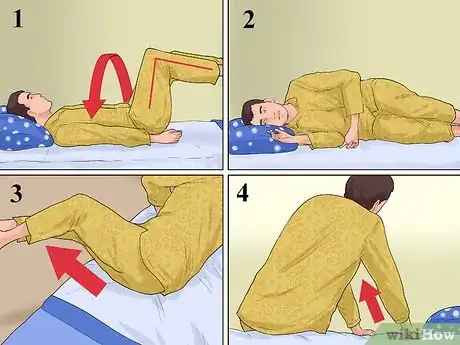
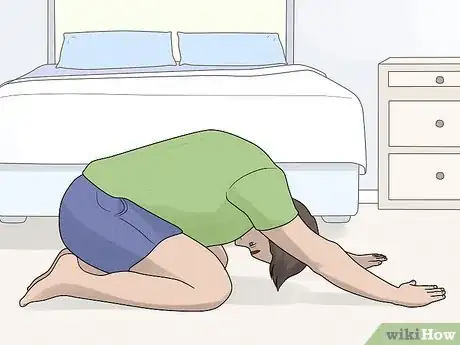
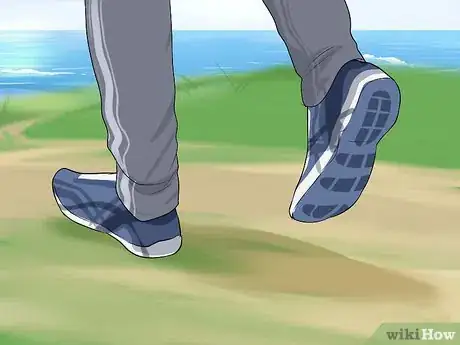


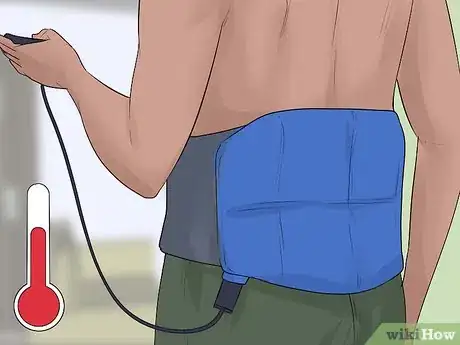
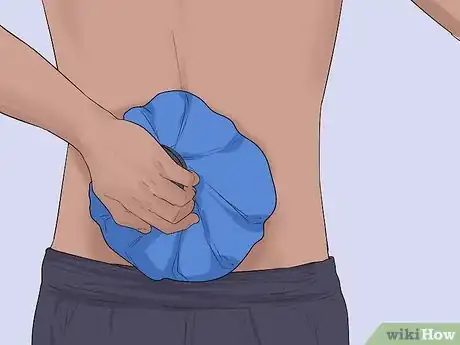
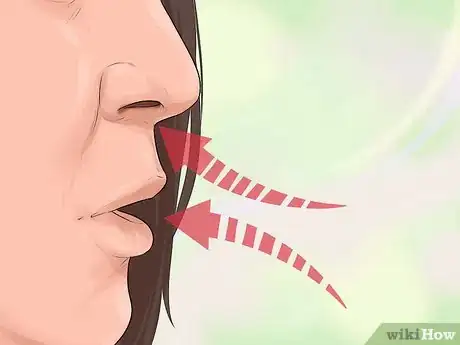
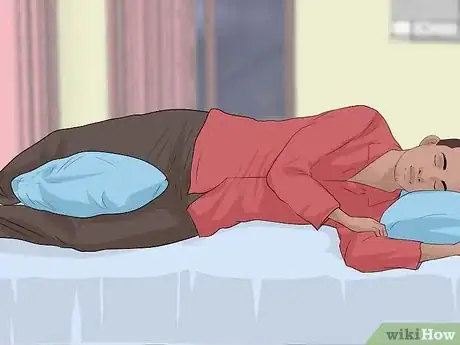
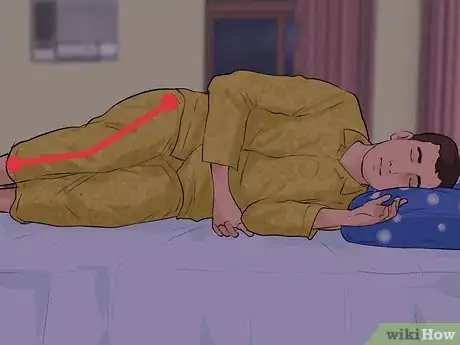
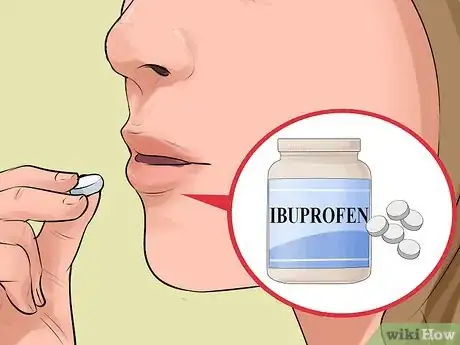
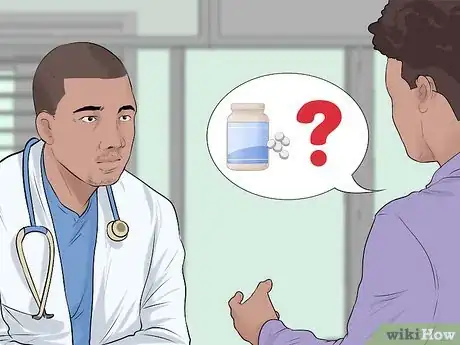

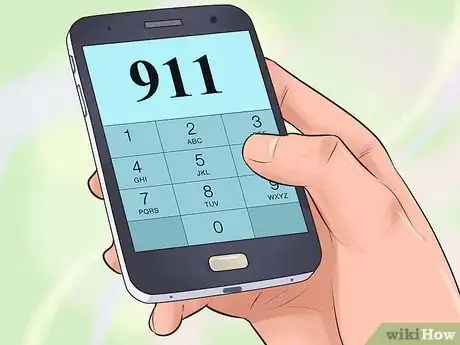
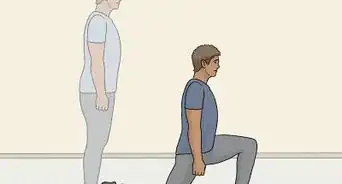
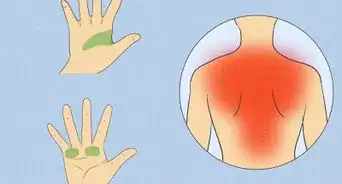
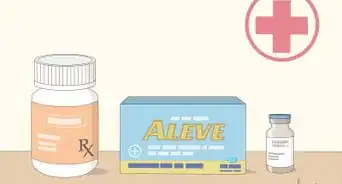
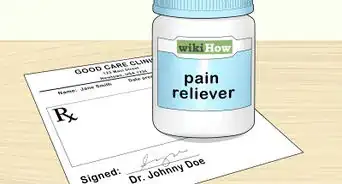
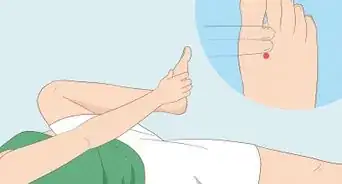


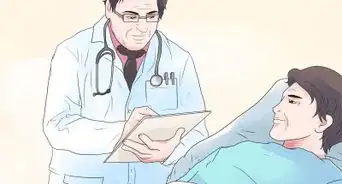
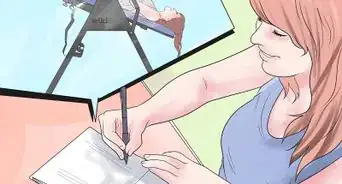
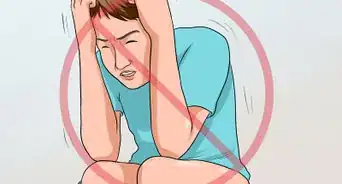

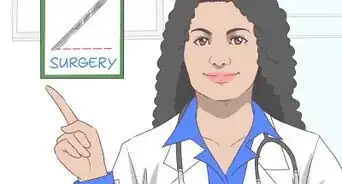
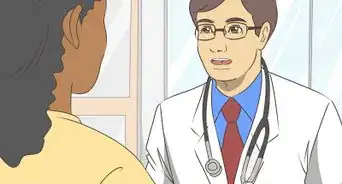
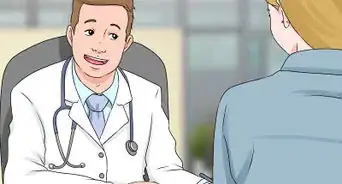









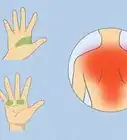
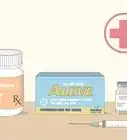




































Medical Disclaimer
The content of this article is not intended to be a substitute for professional medical advice, examination, diagnosis, or treatment. You should always contact your doctor or other qualified healthcare professional before starting, changing, or stopping any kind of health treatment.
Read More...